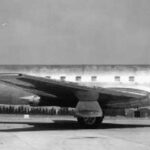Driving presents numerous road hazards, from potholes to sharp objects that can puncture your tires. When faced with a flat or damaged tire, a common question arises: is repair possible, or is a complete replacement necessary? Understanding when a punctured car tire can be repaired versus when it must be replaced is crucial for safety and cost-effectiveness.
Understanding Punctured Tire Repair
When Can a Punctured Tire Be Repaired?
The location and extent of the puncture are key factors in determining whether a tire can be repaired. Generally, if the puncture is located in the tread area and is less than 1/4 inch (6mm) in diameter, a repair might be a viable option.
Furthermore, even if your tire has sustained two punctures, repair could still be considered, provided these punctures are at least 16 inches apart and the total number of repairs on the tire does not exceed two. However, exceeding this limit or encountering more numerous punctures often necessitates tire replacement. You should consider replacing punctured tires in the following scenarios:
- The puncture’s diameter is greater than ¼ inch.
- The puncture is situated on the tire’s sidewall or shoulder.
- Multiple punctures are less than 16 inches apart.
When is Tire Replacement Necessary?
Certain types of tire damage are beyond repair and demand immediate replacement for safety reasons. Sidewall punctures, for instance, are not repairable due to the sidewall’s structural importance and constant flexing. Similarly, punctures larger than 1/4 inch in diameter compromise the tire’s integrity too significantly for safe repair. In these cases, opting for a new tire is the only secure solution.
Exploring Different Tire Damage Scenarios
Run-Flat Tire Repair: Is It Possible?
Run-flat tires, designed for continued mobility even after a puncture, such as Bridgestone DriveGuard tires, can sometimes be repaired. However, their repairability hinges on whether they were driven on with critically low pressure (below 15PSI). Driving run-flat tires underinflated can cause irreversible damage to their internal structure, rendering them unrepairable. To maximize the chances of run-flat tire repair and for all tire types, it’s crucial to avoid driving your vehicle when you suspect a flat or low tire pressure.
Tire Sidewall Bubbles: Repair or Replace?
A bubble on your tire’s sidewall is a strong indication of internal damage resulting from high-impact incidents. These incidents can include driving on a flat tire, striking potholes, improperly hitting curbs, quickly traversing speed bumps or railroad crossings, or overloading your vehicle. Despite their seemingly small size, sidewall bubbles are not repairable. They represent a weakened area in the tire structure and pose a significant risk of sudden tire failure. Tires exhibiting sidewall bubbles should be replaced without delay.
Re-Repairing Tires: Can It Be Done?
It is often possible to repair tires that have undergone previous repairs, provided the new damage does not overlap with a previously repaired area. For example, if you experience a fresh nail puncture in a different section of the tire tread, a repair might be feasible. However, if the new puncture occurs in or adjacent to a prior repair, the tire’s structural integrity may be compromised, necessitating replacement. The success of re-repairing also depends on the quality and correctness of the initial repair.
Tire Damage After Accidents: Repair or Replace?
Following a car accident, especially a significant one, tires often sustain considerable damage that necessitates replacement. If a tire has suffered severe impacts, exhibiting substantial cuts, tread separation, or other structural failures due to the crash, repair is not recommended. In such instances, replacing the damaged tires ensures vehicle safety and optimal performance.
Tire Repair Quick Fixes: Temporary Solutions
In emergency situations, you might be tempted to use quick fixes for flat or damaged tires. While some options can offer temporary relief, they are not intended as long-term repair solutions.
Tire Sealants and Emergency Inflators: Pros and Cons
Tire sealants and emergency inflators can be helpful in getting you to a service center like Firestone Complete Auto Care, but they are not a substitute for proper tire repair or replacement. These products have limitations; tire sealants can freeze in cold climates, potentially damage your tire pressure monitoring system (TPMS), and are generally ineffective for anything beyond minor leaks or small punctures. Importantly, Firestone technicians cannot repair tires that have been treated with temporary sealant, as these sealants can interfere with proper repair procedures.
Tire Patches and Plugs: Not Long-Term Fixes
Patches and plugs are often considered quick fixes for flat tires, but it’s crucial to understand their limitations. A patch is applied to the inner tire surface but doesn’t fill the puncture hole itself, while a plug is inserted into the puncture from the outside but may not create a permanent seal. Using patches or plugs alone is not considered an adequate long-term repair solution. For a reliable and lasting repair, Firestone technicians often utilize a combination patch-plug method, which provides a more robust and durable repair for suitable tread punctures.
Taking Care of Your Tires
To ensure your tire is repaired or replaced safely and correctly, professional inspection and service are essential. Visit your local Firestone Complete Auto Care and inquire about their tire repair services. Prioritizing your safety, Firestone backs its work with a Triple Promise, guaranteeing repairs are Fixed Right, Priced Right, and Right on Time.
Knowing when to repair and when to replace a punctured car tire is vital for your safety and vehicle maintenance. Schedule your appointment with Firestone Complete Auto Care today for expert tire services.

